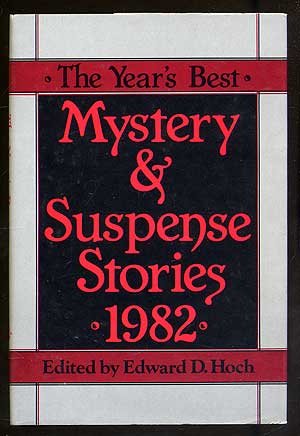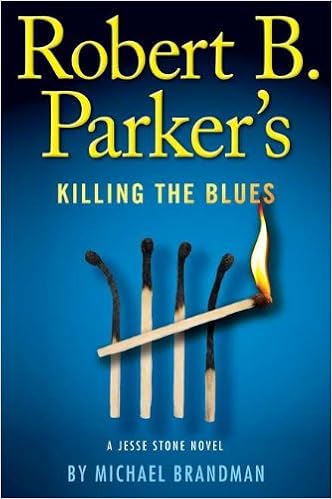But the Victorian age was a great age to kill somebody.
For one thing, there were no regulations on food or drugs, and no real recognition of drugs. So you could buy laudanum, cocaine, heroin, and other fun stuff, clearly labeled, over the counter. (Remember Sherlock's 7% solution... he wasn't buying it from one of the Bow Street Runners, although he might have gotten it from the Baker Street Irregulars...) And almost all the patent medicines contained cocaine, heroin, and/or alcohol.
Food itself was pretty hazardous: bread was whitened with chalk and/or alum, strychnine gave an extra kick to beer, sulphate of copper kept pickles green, and lead was added to chocolate, wine, cider, and a whole lot of other foods. Tea leaves were dried and recycled, and dyed with red lead to make them look fresh. Red lead was also added to cheese for coloring, chalk to milk, and copper to gin... The London County Country Medical Officer discovered, for example, the following in samples of ice cream: cocci, bacilli, torulae, cotton fiber, lice, bed bugs, bug's legs, fleas, straw, human hair, and cat and dog hair. Such contaminated ice cream could cause diphtheria, scarlet fever, diarrhoea, and enteric fever. "The Privy Council estimated in 1862 that one-fifth of butcher's meat in England and Wales came from animals which were 'considerably diseased' or had died of pleuro-pneumonia, and anthacid or anthracoid diseases." (See the Victorian Website HERE) Plus the Victorians didn't believe that either vegetables or fruit were wholesome, unless they were cooked to a puree, and even then, should only be taken in moderation. If you couldn't figure anything else out, you could probably just kill someone by diet alone...
 But let's get on to the real stuff: poison. Arsenic was everywhere. Arsenic was in "wallpaper, beer, wine, sweets, wrapping paper, painted toys, sheep dip, insecticides, clothing, dead bodies, stuffed animals, hat ornaments, coal, and candles". It was used as a beauty treatment - soak your flypapers in water, and drink a few drops in fresh water (which probably came through lead pipes - lead was everywhere) to make your skin translucently white. It was used as a treatment for obesity, and it certainly could take the weight off. Sometimes all of it. Green wallpaper and green clothing were both soaked in arsenic to fix the color. And so was that Victorian mandatory wear for women, crepe, which was THE fabric of mourning.
But let's get on to the real stuff: poison. Arsenic was everywhere. Arsenic was in "wallpaper, beer, wine, sweets, wrapping paper, painted toys, sheep dip, insecticides, clothing, dead bodies, stuffed animals, hat ornaments, coal, and candles". It was used as a beauty treatment - soak your flypapers in water, and drink a few drops in fresh water (which probably came through lead pipes - lead was everywhere) to make your skin translucently white. It was used as a treatment for obesity, and it certainly could take the weight off. Sometimes all of it. Green wallpaper and green clothing were both soaked in arsenic to fix the color. And so was that Victorian mandatory wear for women, crepe, which was THE fabric of mourning.  Now widows were required to dress from head to toe in black, including complete veil, for at least one year, if not longer. Sweating in black crepe mourning garments (37 pounds of it) in summer was common, and I've run across receipts telling women how to wash the [arsenic-laden] black stains from their armpits and neck (both prime lymph node areas). Plus they were walking around, breathing through an arsenic-laden veil all day, every day... Personally, I think we have the explanation why the widow in so many Victorian memoirs and novels falls into a decline and dies young...
Now widows were required to dress from head to toe in black, including complete veil, for at least one year, if not longer. Sweating in black crepe mourning garments (37 pounds of it) in summer was common, and I've run across receipts telling women how to wash the [arsenic-laden] black stains from their armpits and neck (both prime lymph node areas). Plus they were walking around, breathing through an arsenic-laden veil all day, every day... Personally, I think we have the explanation why the widow in so many Victorian memoirs and novels falls into a decline and dies young... And then, of course, some people deliberately used arsenic to kill. Charles Francis Hall, an American Arctic explorer in the mid-1800s, died sometime around October, 1871, on his 3rd expedition. The ship was frozen in for the winter, and he'd returned from an outing with an Inuit guide, when he had a cup of coffee, collapsed, and fell into vomiting and delirium. After the expedition, an official investigation said he died of apoplexy, but a 1968 exhumation showed monumental levels of arsenic. It seems there might have been a feud between him and Dr. Bessels...
 And there was pretty Madeleine Smith of Glasgow: In 1857, when she was 20, she (GASP! HORROR!) had an affair with an apprentice nurseryman named Pierre Emile L'Angelier. Her parents, meanwhile, knowing nothing of Madeleine's behavior, found her a husband. Miss Smith tried to break off her affair with L'Angelier, and asked him to return her letters; instead, he blackmailed her. So off she went to an apothecary's and bought some arsenic - for flies, of course. Or her complexion. In any case, you could buy it over the counter. A few days later, L'Angelier died of arsenic poisoning. Her letters were found, she was arrested and charged with murder, and the trial proceeded. Somehow, she was acquitted. (She was young, she was lovely, she had a good lawyer, and the police had messed up the letters, mixing up the pages...) But she had to leave Scotland. (She later married - twice - and lived until 1928.)
And there was pretty Madeleine Smith of Glasgow: In 1857, when she was 20, she (GASP! HORROR!) had an affair with an apprentice nurseryman named Pierre Emile L'Angelier. Her parents, meanwhile, knowing nothing of Madeleine's behavior, found her a husband. Miss Smith tried to break off her affair with L'Angelier, and asked him to return her letters; instead, he blackmailed her. So off she went to an apothecary's and bought some arsenic - for flies, of course. Or her complexion. In any case, you could buy it over the counter. A few days later, L'Angelier died of arsenic poisoning. Her letters were found, she was arrested and charged with murder, and the trial proceeded. Somehow, she was acquitted. (She was young, she was lovely, she had a good lawyer, and the police had messed up the letters, mixing up the pages...) But she had to leave Scotland. (She later married - twice - and lived until 1928.)  |
| Dr. Thomas Neill Cream |
Chloroform. Also available over the counter. The most famous story of murder (?) by chloroform is the Pimlico Mystery, and the death of Thomas Edwin Bartlett. A wealthy grocer, he married a Frenchwoman 10 years his junior, Adelaide. The couple had a special friend, the Reverend George Dyson, who hung around a lot. Anyway, one morning Adelaide got up and found her husband dead in bed. The coroner opened him up and nearly passed out from the odor of chloroform rising from the stomach. Adelaide said that he'd been threatening suicide. Dyson said he'd bought the chloroform for the Bartlett's to remove grease stains. (Who knows? Maybe it works.) But there were no burn marks on the inside of Bartlett's throat, which there should have been if he'd been drinking chloroform. So Bartlett's father - who'd never been able to stand Adelaide - thought it was all suspicious and had her charged with murder.

At the trial what really spared Adelaide's life was a simple incident, remembered by the servants. One day, Mr. Bartlett was looking through his wife's drawers (God only knows why, but it certainly sounds like the archetypal Victorian paterfamilias), found a pill, and took it, without asking anyone what it was or why it was there. (Again, God only knows why.) Later he told everyone, including the servants, what he'd done. Adelaide's barrister suggested that Mr. Bartlett had gotten up in the middle of the night with stomach pains or some such, found the bottle of chloroform, and knocked it back without asking any fussy questions of anyone first. (The barrister said that by drinking it quickly, there would be no burns on the throat.) The jury didn't entirely believe this, but she was acquitted, to rapturous applause from the spectators. An internationally famous surgeon/pathologist of the day, Sir James Paget, said of the case, "Now that she has been acquitted for murder and cannot be tried again, she should tell us in the interest of science how she did it!" Feel free to post any solutions to that little problem. Adelaide never told anyone, because she vanished immediately after acquittal, and no one knows where she went.
So, the Victorian Age - your environment is deadly, the food could kill you, poisons abound, and the symptoms of all are pretty much the same. It was a coroner's guessing game, a jury's whim, and there was no CSI team waiting in the wings. There was only one Sherlock, and he was on paper only. No cameras, no social media, no radio, no publicity. You really could get away with murder. Especially if you were young and pretty...






































